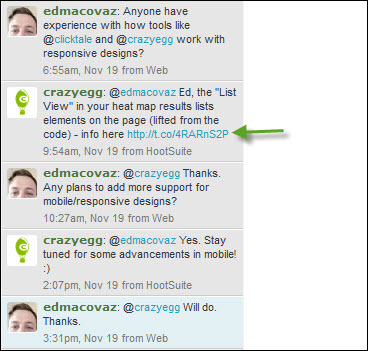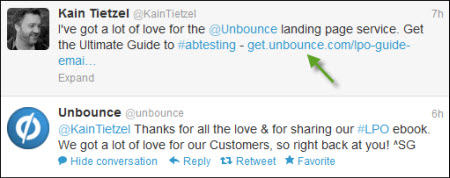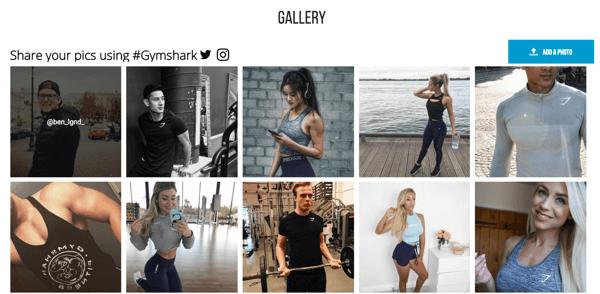Are you looking to attract prospects, convert them to customers and keep them coming back? Then social media and content marketing are a match made in heaven.
The key to success is to make the connection between content marketing and social media. Let’s look at the content needed to get your marketing to that lucrative intersection.
#1: Attract Prospective Customers
The first question on a prospect’s mind when considering a purchase is, “What solutions are available?”
Your goal is to create awareness and make sure that your solution meets the buyers’ need when they’re ready to make a decision.
According to data from Google and Shopper Science’s Zero Moment of Truth report, consumers in 2011 consulted an average of 10 sources before making a buying decision. That’s up 100% from five sources in 2010.

The number of sources a buyer consults before making a decision doubled year over year.
Successful businesses are communicating with prospects on social networking sites and directing them to the material the prospects need to make an informed decision. How are they doing this?
One way is to create informational articles.
Social network users are constantly sharing, curating and consuming informational content. Often, the headline or a short description of the content appears on the social network together with a link to view the content on a company website.
Businesses need to share this informational content and have it written for prospects who are in research mode, learning about the solutions that are available.
Charles Schwab, a financial planning company, distributes links to resources via social networking sites and makes them available for prospective leads who reach out via social media.

Charles Schwab diverts this prospect who is early in the buying cycle from Facebook Page to a free resource on their website.
Another method is to raise awareness of your products and services through informational webinars and seminars.
Informational webinars and seminars can demonstrate your expertise while providing prospects with the information they need during the research stage of the buying cycle.
This tweet from Cleveland Clinic is an excellent use of social media to lead those interested from Twitter to the informational content a decision-maker needs to make a choice.

Cleveland Clinic provides a link via Twitter to register for a webinar for those considering epilepsy surgery.
In this case, the conversation begins on Twitter, but continues to a registration page and ultimately to informational content delivered via webinar.
Key Takeaway: Conversations about your products and services often begin within social networks, but additional content may be needed to assist the prospect. Make sure that those who are communicating with prospects via social media are aware of all of the resources your business has available for prospective customers.
#2: Convert Prospects
The second question on a person’s mind when considering a purchase is, “Which is the right solution for me?”
Businesses that successfully convert new customers from social media create and distribute content that provides proof points to the sale. Content that assists in meeting this goal proves that your solution provides more value than the other solutions the prospect has researched.
A very effective piece of content to meet this goal is the demo video or “explainer” video. The social media tool Little Bird provides a demo video on their home page that displays the tool in action and details the benefits.

Little Bird investor Dharmesh Shah provides a link from Twitter to see a demo of the application.
A second piece of content that will build the type of trust that closes the sale is the case study. Case studies close sales because they prove that others have had success with your solution.
The Mayo Clinic has dozens of success stories on their website that they distribute via Facebook.

This Facebook link leads to a Mayo Clinic success story that provides proof of their expertise.
A third piece of content that can convert leads into sales are white papers. For B2B marketers, the white paper is a staple piece of content used by possible buyers to assist in the decision-making process.
Gene Marks, an author, writer and speaker, makes good use of social media and white papers.

This tweet diverts those interested in CRM software from Twitter to a white paper download page.
Key Takeaway: Create content that provides the proof that prospects are looking forbefore they will part with their hard-earned dollars. Distribute that content through social media channels.
#3: Keep Existing Customers
The last question on a buyer’s mind is, “Am I happy with the decision I made?”
This goal is about retention and referral. Successful businesses will use social media and content to keep customers satisfied.
One type of content that retains existing customers is support documentation.
At the Crazy Egg software company, part of their content and social media strategy is to reduce the number of support tickets and raise customer satisfaction by resolving as many issues as possible through the use of online content.

Crazy Egg efficiently handles this technical issue with a link to support documentation on their website.
They could choose to divert these questions to a tech support phone call or email-based ticketing system, but in many cases this is neither convenient for the customer nor efficient for the company.
A second content type that increases loyalty is documentation of best practices.
Businesses that create content that teaches customers how to get the most out of their product or service will increase customer satisfaction.
Charles Schwab provides in-person workshops that teach their customers how to better manage their money.

This tweet leads interested individuals from Twitter to a registration page and ultimately an in-person workshop.
Another content type that increases retention of existing customers is case studies.
While the function of the case study in converting a new customer is to provide a proof point, the case study is also useful in retention because it provides guidance to the existing customer.
Unbounce, the landing page software company, does an excellent job of providing case study material to existing customers.
Unbounce’s Ultimate Guide to Landing Page Optimization report has numerous examples of the do’s and dont’s of using their software.

This Unbounce customer is grateful for the additional value the company provides through its content, so he shares a link to it on Twitter.
Key Takeaway: We’ve all heard that it’s much cheaper to keep existing customers than to find new ones. Use social media and content marketing as a customer-service tool to increase satisfaction and referrals.
Final Wrap-Up
Social media and content marketing are joined at the hip.
Social networks like Twitter, Facebook or LinkedIn are not always where a conversation begins and ends. To attract, convert and keep customers, social media and content marketing should be parts of a seamless marketing, sales and customer-service strategy.
Your current and future customers are using social media. Make sure you have well-planned content marketing and give your social media team the information they need to share the content your audience needs.
What do you think? How do you integrate content marketing with social media? Leave your tips and comments in the box below.



















